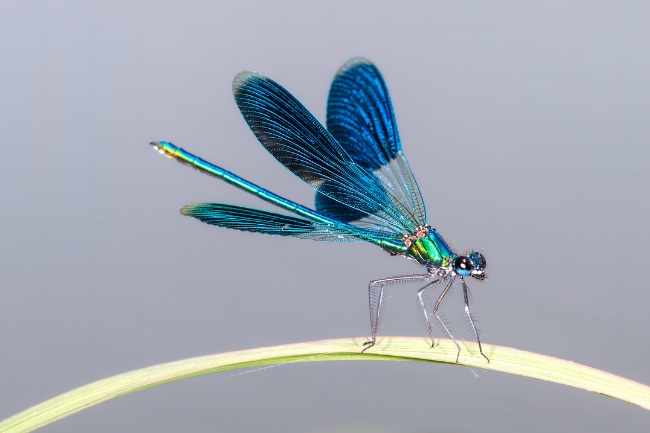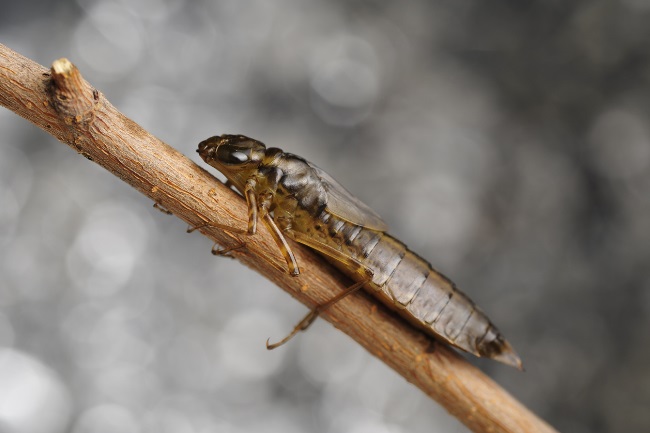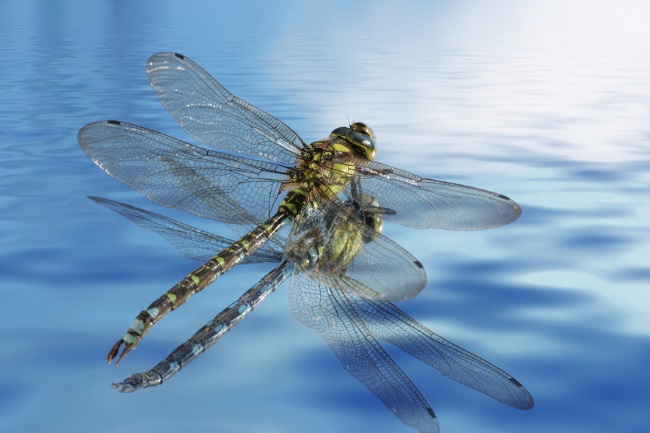Like all insects dragonflies have six legs in three pairs. These are attached to their thorax along with two sets of wings. They use their legs for all kinds of tasks, from grabbing food to cleaning themselves.
Contents
How many legs does a dragonfly have?

In both the adult and the juvenile they have six legs in total, three pairs. This is the same as all insects, though in some insect species, juvenile forms will have additional leg-like appendages, such as in maggots and caterpillars.
Though dragonflies may be one of our more visible insect species, it isn’t always easy to see them up close. As adults they spend their time zipping through the air, often just giving us a flash of their colours as they pass by.
| Life Stage | Number of Legs |
|---|---|
| Nymph | 6 legs |
| Adult | 6 legs |
If you’re lucky, you might catch one as it is at rest, settled on a branch or a lily pad. Yet even when they’re still, it’s hard to get a good understanding of a dragonfly’s anatomy. With their large wings covering their upper body from sight, we mostly just think of them as a long colourful flying tube.
One helpful tip is that dragonflies are insects, and what makes an animal an insect is how its body is arranged. To be an insect, they need to have three main body parts; the head, the thorax and the abdomen.
On a dragonfly, the head is probably the easiest thing to spot. Most of the head is taken up by large, almost bulbous eyes and a veracous mouth. The thorax is the next section, and can sometimes be hard to distinguish from the abdomen in insects. Yet, in dragonflies the thorax is generally significantly larger than the abdomen, making it easier to spot.
This large thorax is important as this is where the dragonflies wings and legs are attached, meaning it contains those all-important flight muscles. The abdomen then tapers away, sometimes widening again further down. This contains the reproductive and digestive organs.

While this is the anatomy of an adult dragonfly, the larvae, at first glance, appear completely different. The dragonfly larvae go through their adolescence in a very different environment to the adults, living within water or mud, hunting aquatic prey.
Unlike the adults, they don’t yet possess wings, and look very alien and unfamiliar to our human gaze. However, on closer inspection, they aren’t so different from their adult counterparts. They have a very similar head, though with adaptations to suits their aquatic home. This is followed by the thorax to which their legs and their wing buds are attached. The abdomen may be much shorter in larvae but contain the same number of segments to the adults.
So now we know how a dragonfly is put together, the question is how many legs are attached to their thorax?
Like most insect legs, they have several segments, with joints in between allowing movement. The highest part is the femur, followed by the tibia, tarsi and at the end a claw for holding on to surfaces and food.
Also read: How Long Does a Dragonfly Live for? (Lifecycle Explained)
Why does a dragonfly need legs?

This may seem like a bizarre question, but it’s a fair one. When adult dragonflies can swoop through the air like birds, and juveniles can swim through the water, why do they need legs?
Adult dragonflies use their legs for all kinds of essential tasks. Firstly, they are highly useful appendages for catching food as they dash through the air. You’ll sometimes notice a dragonfly with a small spot below it, where it’s carrying its unfortunate prey. Many will eat on the wing, munching up their food while they glide around looking for more.
| Leg Function | Description |
|---|---|
| Walking | Dragonfly legs are primarily used for walking and maneuvering on various surfaces, such as plants, rocks, or the ground. |
| Perching | Dragonflies have specialized legs that enable them to grip onto surfaces, allowing them to perch and rest. |
| Grasping Prey | Dragonfly nymphs, in their aquatic stage, use their legs to grasp and hold onto prey items, such as small aquatic insects or tadpoles. |
| Catching Prey | Adult dragonflies use their legs to capture and hold onto prey, including flying insects, which they catch mid-flight. |
| Mating | During mating, male dragonflies use their legs to clasp onto the female’s thorax or abdomen, forming a mating wheel position. |
| Cleaning | Dragonflies clean their bodies by using their legs to brush and groom their wings and other body parts, ensuring they are free from debris or foreign objects. |
Legs are also useful for landing, clinging on to leaves or rocks, or wherever the dragonfly wants to rest. This is important so they can hide up high or in the vegetation. If they just sat down on the ground, they would be more likely to be eaten.
They will settle down to rest whenever they feel like it, sometimes just for short bouts between flying. They also settle in the evening when it starts to get cold or if they need to settle in the sun for a while to heat up. Like all insects, they don’t make their own heat, so they need to refuel from the sun.
Another way they use their legs is for cleaning, in particular their eyes. Those large eyes are excellent for spotting small prey around them, so it’s important they stay in tip-top condition.
Finally, legs are helpful for males to grasp hold of females before mating. A male will grab the female and then bend his abdomen over his body so he can grasp the back of her neck. The female will then reach her abdomen to the bottom of the male’s thorax to be fertilised.
In juvenile dragonflies, the legs are still useful for holding prey while they eat it and for clinging on to surfaces. However, they have the additional weapon of an extendable jaw that can reach out and grab their prey like an arm. This means their legs are less useful for grasping hold of their prey in the first place.
Dragonflies: natures bug zapper
While a close look at a dragonfly may be a little like staring into an alien spacecraft, the good news is they have come in peace. They may not be everyone’s favourite but as well as their beautiful colours, and their amazing aerial acrobatics, they are excellent bug repellants, snapping up as many flies, mosquitos and other flying insects as they can.
They are so well adapted their design hasn’t changed much since the days of the dinosaurs, and even if humans play their cards wrong they’ll probably still be floating through the air in another million years time.

